Do you know how to standardize the use of micrometers?
2021-02-24
The micrometer often used in work, the scientific name should be called the spiral micrometer, it is made according to the principle of spiral enlargement, that is, the screw is rotated in the nut for one revolution, and the screw will move forward or backward along the axis of rotation for a distance of one pitch. Therefore, the tiny distance moved along the axis can be expressed by readings on the circumference. So how did you make such a sophisticated instrument and how much do you know about its use skills? This article is a summary of knowledge!
First, let's take a look at the most common vernier micrometer.
1. Standard mechanical outside micrometer
The names of the parts and the names of the main components are shown in the figure below
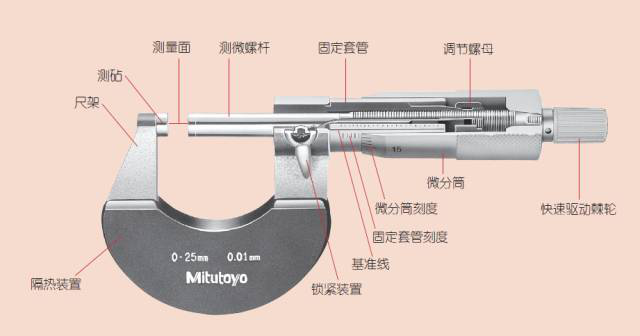
2.Measuring principle of standard mechanical micrometer
The distance p (p=0.5mm) of one revolution of the mandrel is divided into 50 equal parts by the differential cylinder (scale), so that the reading of 1 scale is 0.01mm.
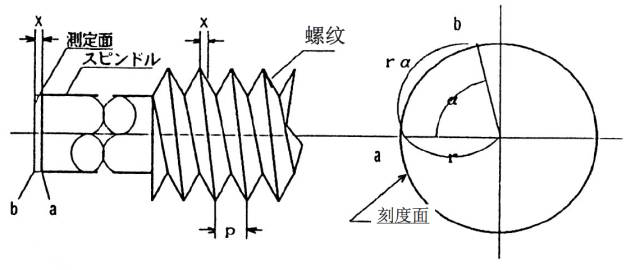
3,Measuring principle diagram of standard mechanical micrometer

Calculation of Measuring Principle of Standard Mechanical Micrometer
4, How to read the standard mechanical micrometer scale
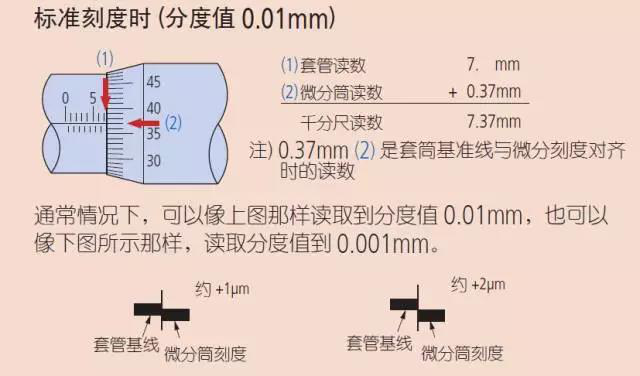
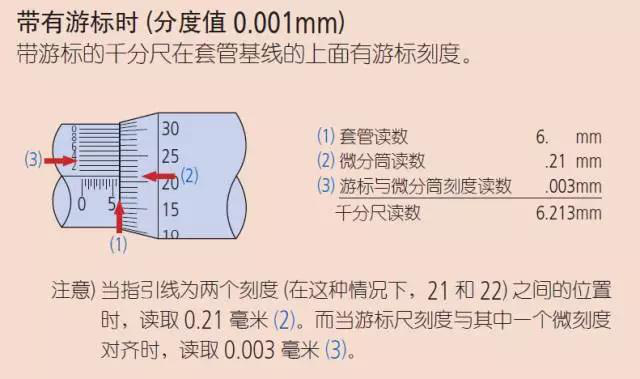
After the baseline is aligned, we can determine the last digit of the size by the position of the baseline.
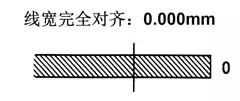

5,Digital display outside micrometer
The basic structure is shown in the figure below.
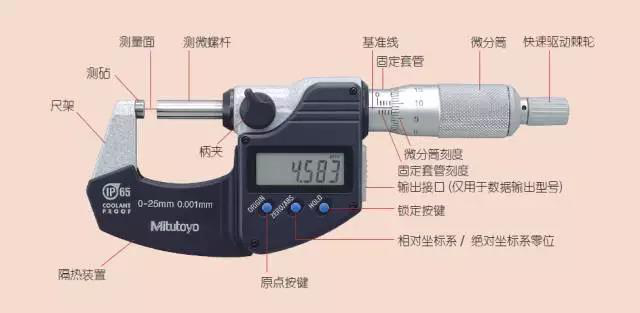
6,Measuring principle of digital external micrometer
The resolution is 0.001mm, and the distance of one revolution of the spindle is 0.5mm divided into 500 points by the sensor (rotor, stator), 0.5mm÷500=0.001mm.
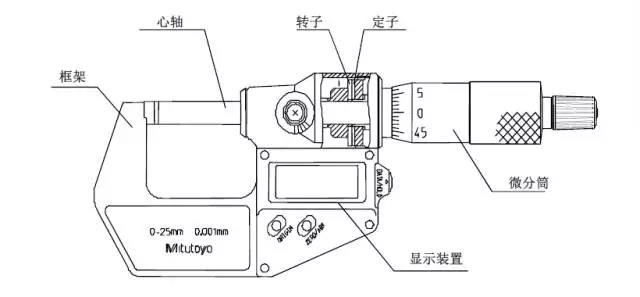
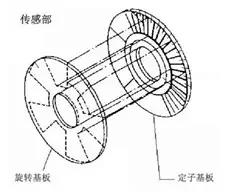
Measuring principle of digital micrometer In addition to the above two common micrometers, there is also the following outside micrometer with counter
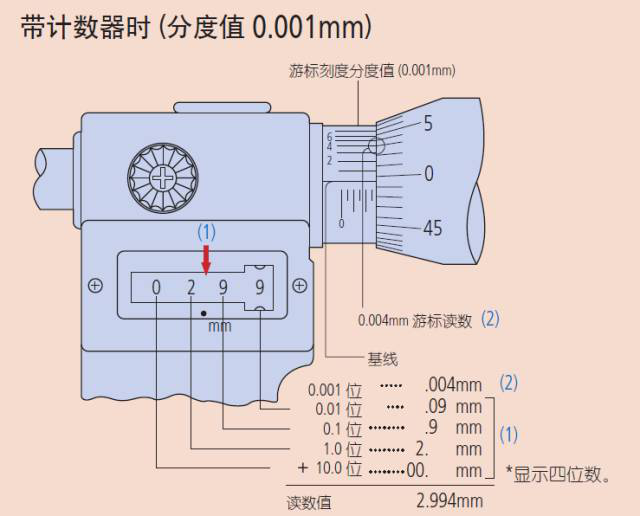
7,Force measuring device for micrometer
The force measuring device of the micrometer is also one of the very important components. Reasonable use can increase the life of the micrometer and improve the measurement accuracy.
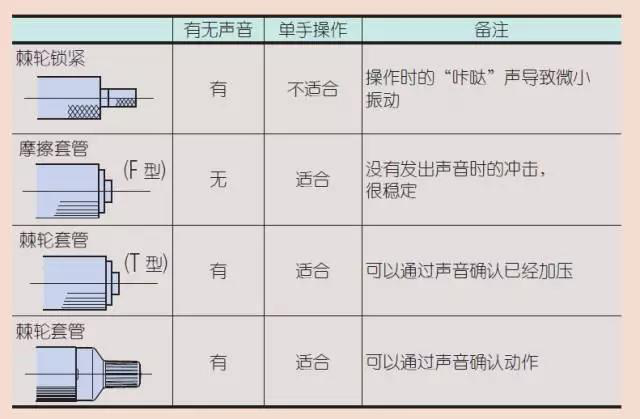
Note: This chart is from the introduction of Mitutoyo Micrometer Force Measuring Device.
Precautions when using micrometer products
Now that the basic structure and reading method of the micrometer are introduced, the next most important thing is the precautions when using the micrometer product and the maintenance and maintenance of the micrometer.
1. Carefully check the type, measurement range, accuracy and other specifications, and choose the appropriate model for your application.
2. Before measuring, place the micrometer and the workpiece at room temperature for a long enough time to equalize the temperature.
3. Look straight at the reference line when reading the microtube marking.
If you look at the scale line from a certain angle, the correct position of the line will not be read due to visual errors.

4. Adjust the starting point (zero) before measuring, and use lint-free paper to wipe the measuring surface of the measuring anvil and micrometer screw.
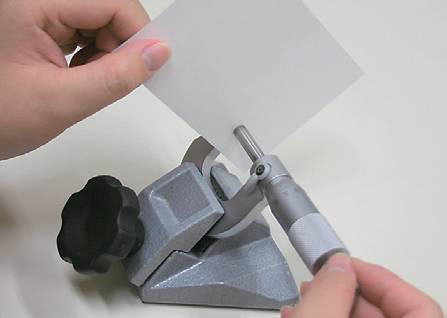
5. As part of daily maintenance, wipe off any dust, debris and other debris around the environment and on the measurement surface. In addition, wipe off any stains and fingerprints carefully with a dry cloth.
6. Use the force measuring device correctly so that the measurement can be performed under the correct force.
7. When installing the micrometer to the micrometer stand, the stand should be fixed and clamped at the center of the micrometer frame. But don't clamp it too tightly.
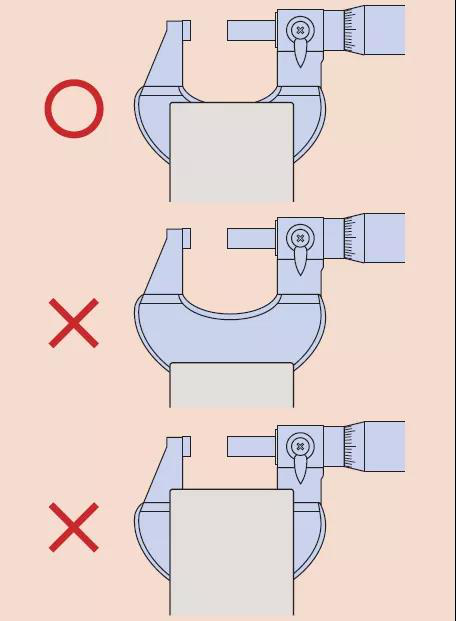
8. Be careful not to drop or bump the micrometer. Do not rotate the micrometer screw with excessive force. If you feel that the micrometer may be damaged by accidental misoperation, you need to further check its accuracy before use.
9. After storing for a long time or there is a protective oil film, gently wipe the micrometer with a cloth soaked in anti-corrosion oil.
10. Precautions for storage: Avoid direct sunlight during storage. Store in a place with good ventilation and low humidity. Store in a dust-free place. If stored in a box or other container, the box or container cannot be placed on the ground. During storage, there should be a gap of 0.1mm to 1mm between the measuring surfaces. Do not store the micrometer in a clamped state.
Maintenance of micrometer products during use
First of all: wipe off the dirt and fingerprints on each part with a dry cloth. If long-term storage and drying without oil, wipe a thin layer of oil with a cloth moistened with anti-rust oil, although this may leave oil stains and spots on the alloy measurement surface, but if it is not used for a long time, do this Will ensure that your micrometer performance is durable. Finally, when storing the micrometer, we must pay attention to the following points.
1. When storing, please keep it in a place without direct sunlight, less humidity, good ventilation and less dust.
2. Remember to keep it in a storage box, not directly on the ground.
3. The most important point: open between the two measuring surfaces for storage by about 0.1-1mm, and at the same time, do not lock the fastening device to prevent malfunctions during storage.





